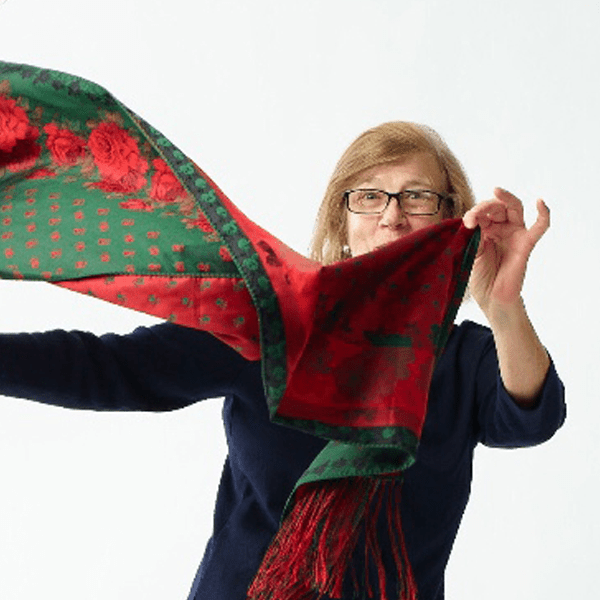
Mary Shaffer discusses how she got involved with slumping through a suggestion by Fritz Driesbach at RISD.
02:20Mary Shaffer discusses how she got involved with slumping through a suggestion by Fritz Driesbach at RISD. Oral history interview with Mary Shaffer by Catherine Whalen and Barb Elam, conducted via telephone, March 21, 2019, Bard Graduate Center. Clip length: 02:20.
Mary Shaffer: So [Wassily] Kandinsky is very important to me. He back painted on glass. I went to an art school where I learned so many different techniques—not an art school, high school. We would do theoretical classes in the morning and so-called practical classes in the afternoon, like wood carving, sewing, making patterns, working with wood, building things. And so I had a lot of hands-on experience with stuff like that, so we did watercolors, and watercolors are amazing because it’s like back painting on glass. The first mark you put down is the mark you see. You can’t fix it. So I was interested in windows and window light and I wanted to paint on an undulating surface. So I was making wooden structures in my basement studio at my house. And we were very generous. A lot of people stayed at our house. [Dale] Chihuly went on a sabbatical, a mini-sabbatical and Fritz Dreisbach came to take over the glass department, and so he lived in our basement. And when he saw these wooden frames that I was trying to make, he said, ‘Mary, why don’t you bend glass?’ And I said, ‘Well, how do you do that?’ and he said, ‘Well, I don’t know. I think they use sand or something.’ So I started working with bending glass, and Toots Zynsky was a student there, and also would babysit for me, and she was using the kiln, so she would regulate the kilns at first, and then Therman Statom gave me a little kiln. He stole the kiln from RISD and gave it to me as a present, so I took it into my painting studio and every day that I went to paint I would make a small piece in this kiln. It only took about four or five minutes. And it was amazing because nobody was slumping then, that we knew about. Nobody knew that Sydney Cash was doing stuff, so everything I made in this little kiln was like brand-new, so that was really intriguing to me. And I call these tiny little pieces that were like, two to three inches high, test drawings. I thought of them as drawings even though they were small sculptures, and that became the basis of a lot of my future work.